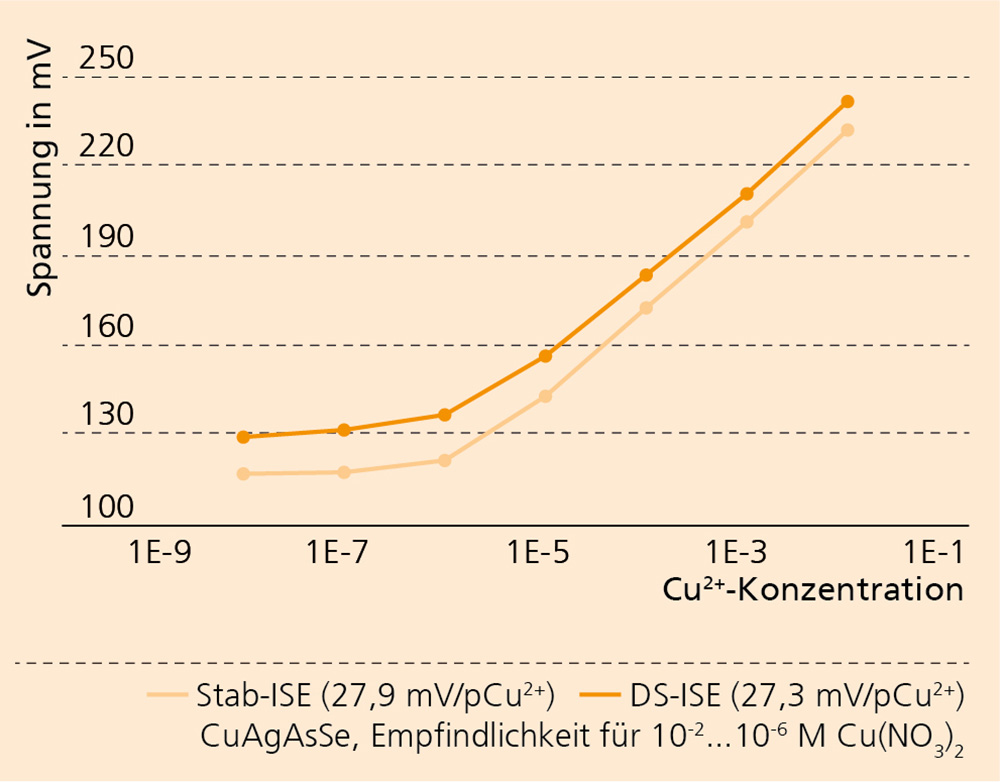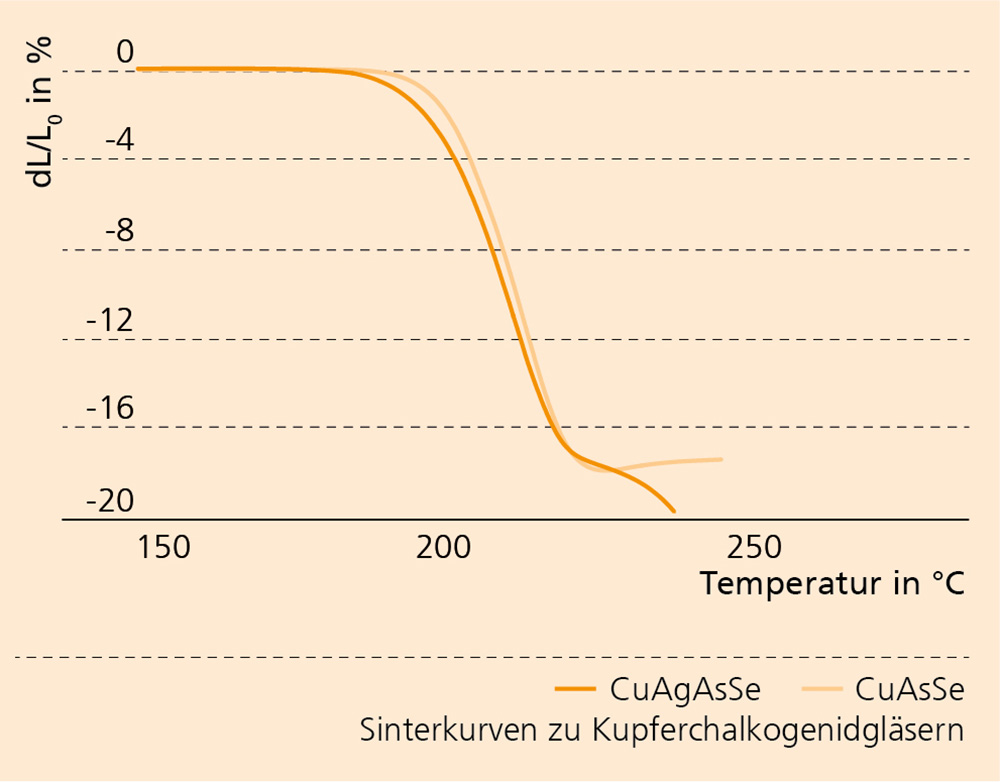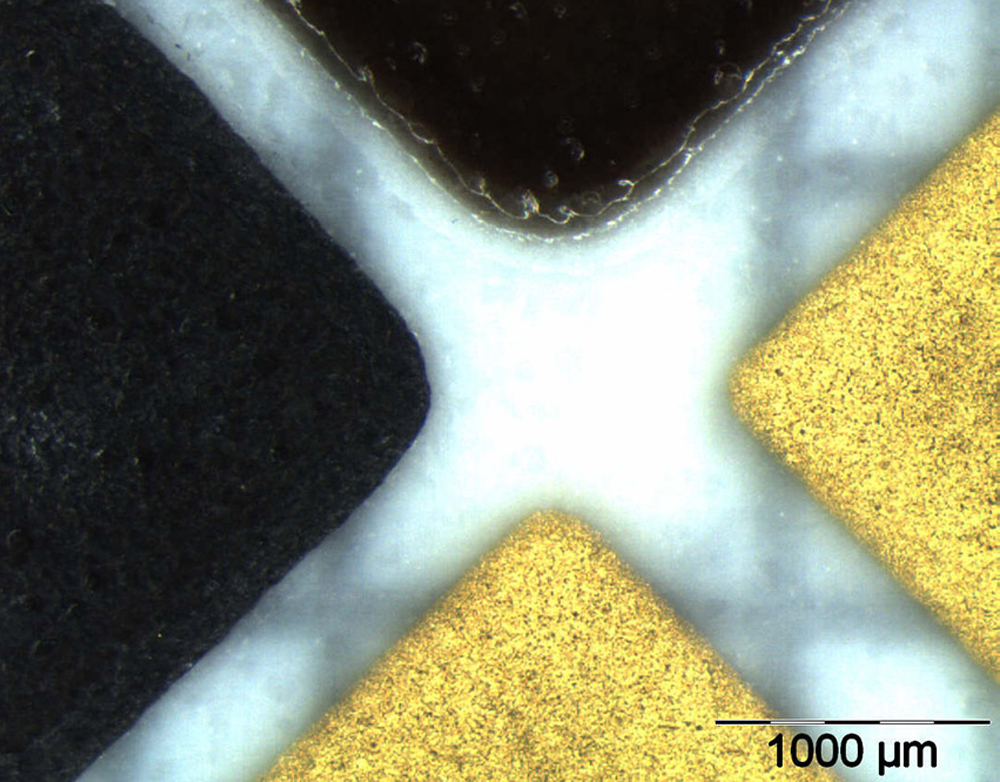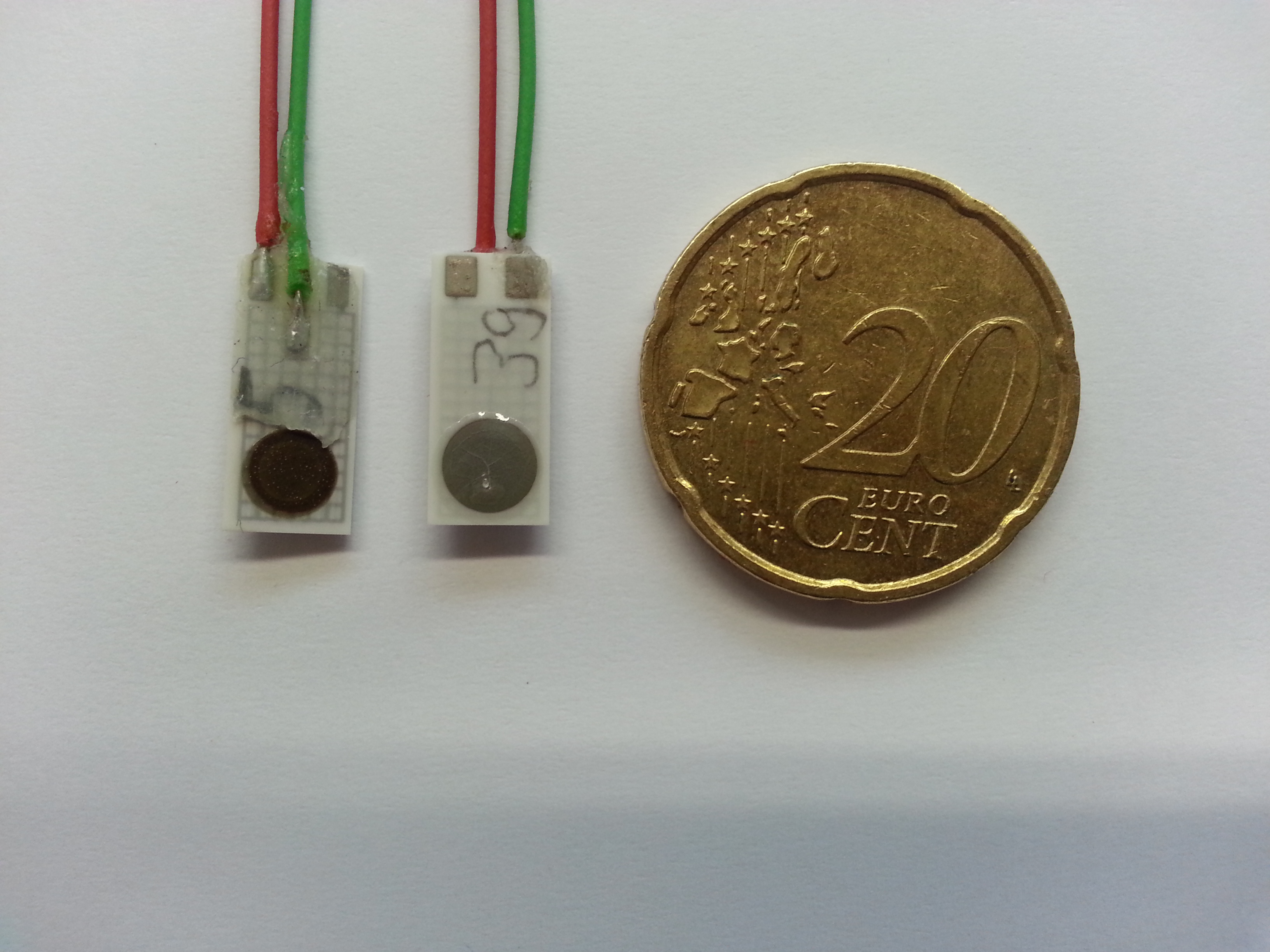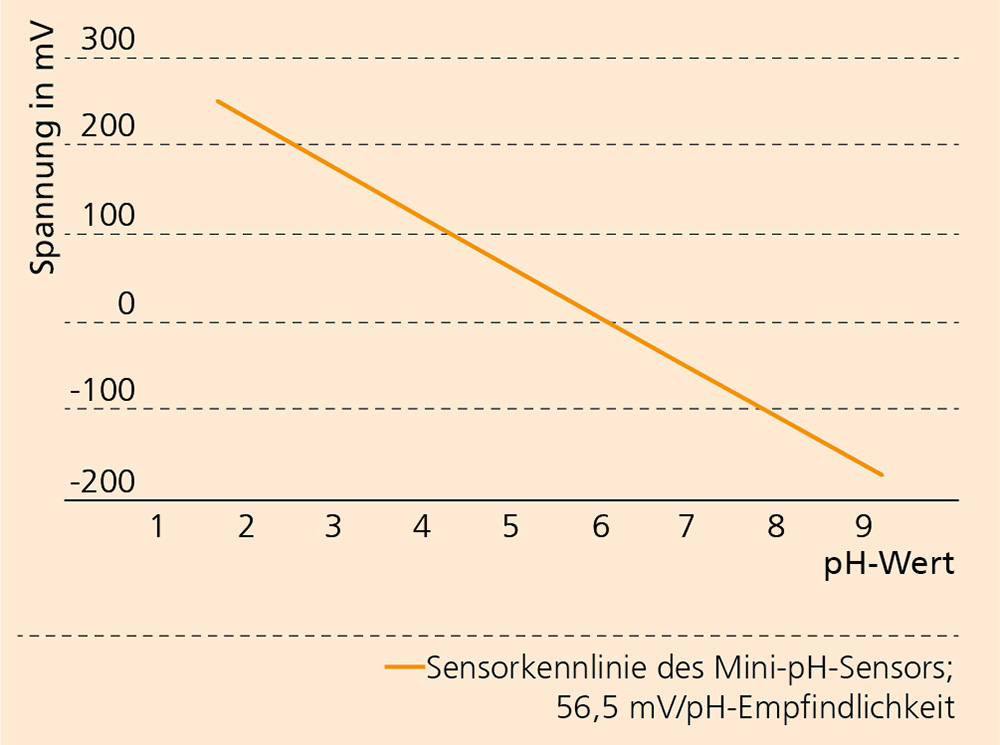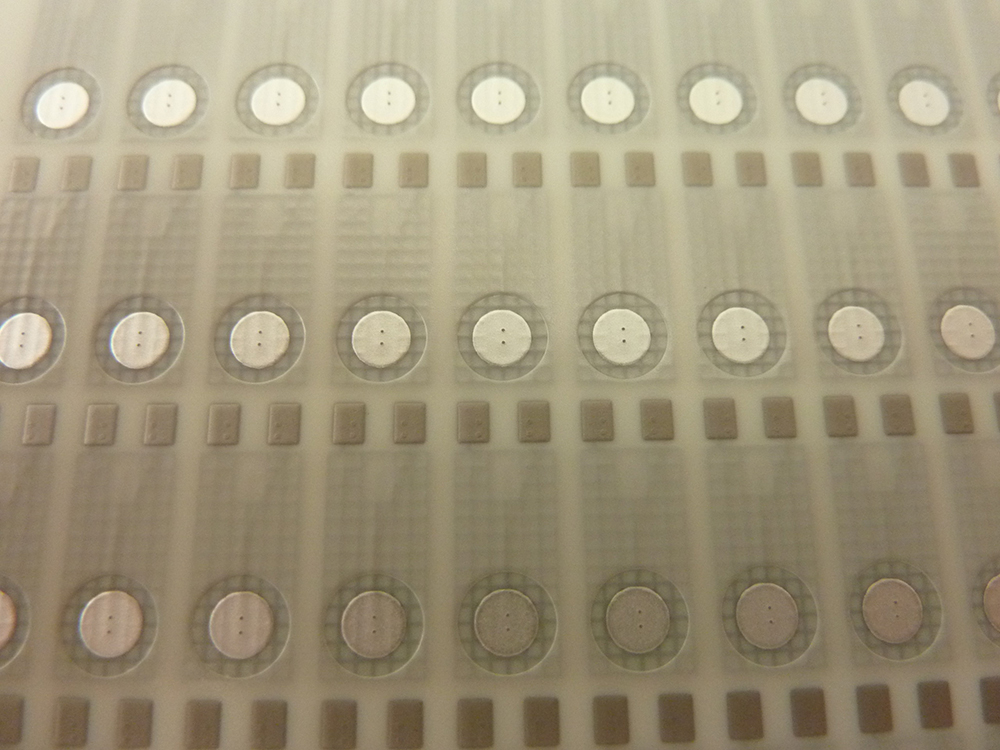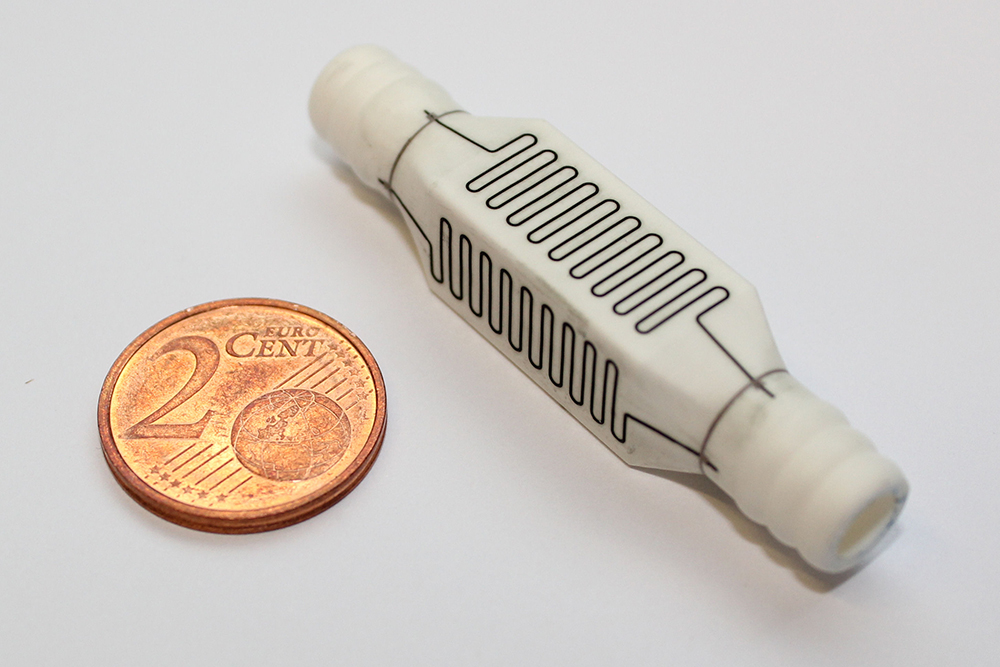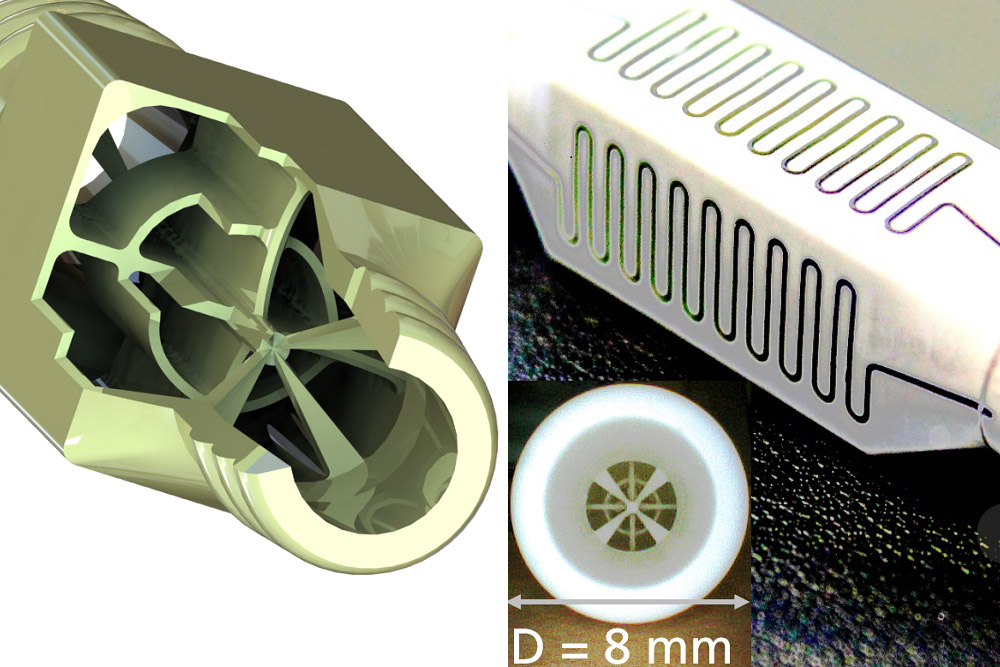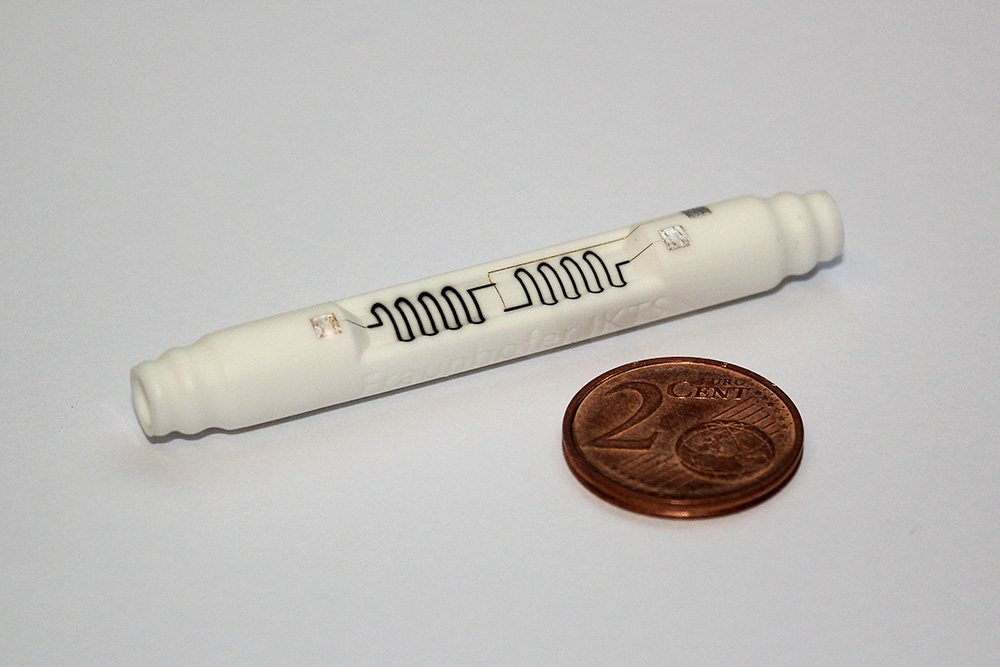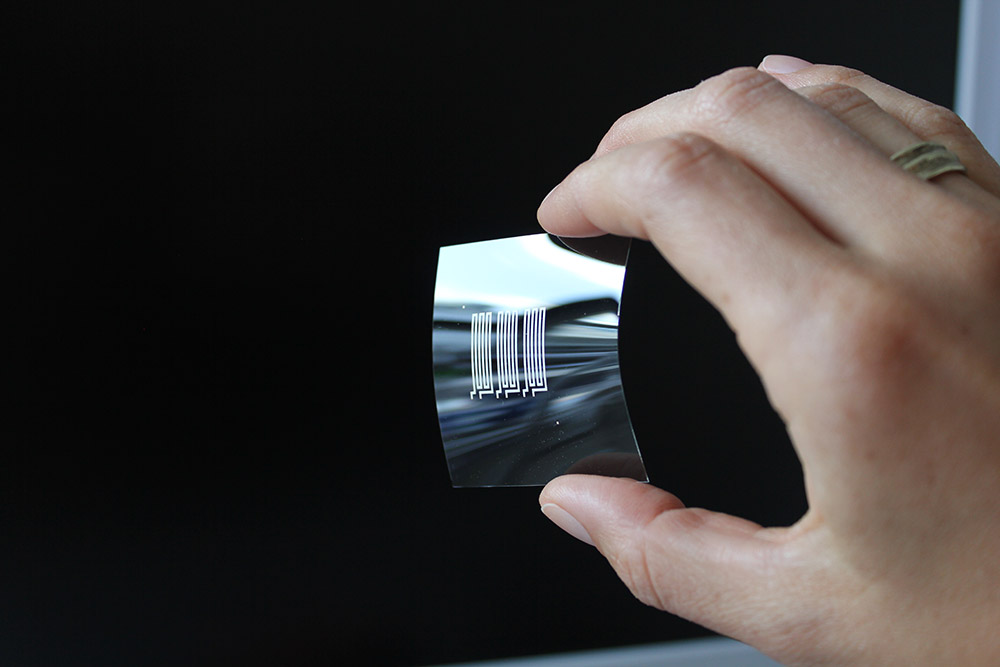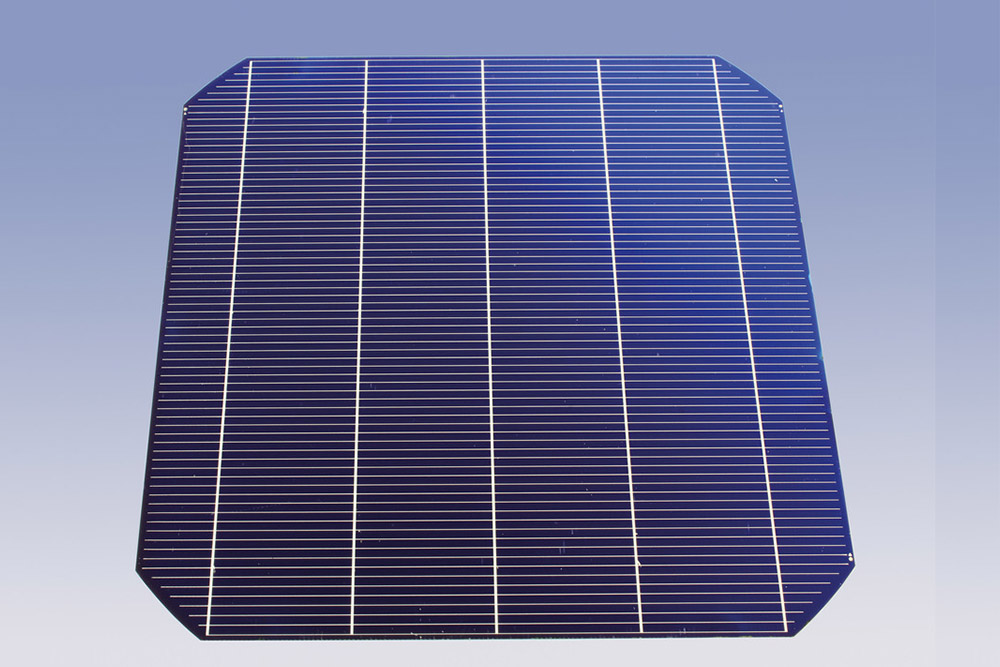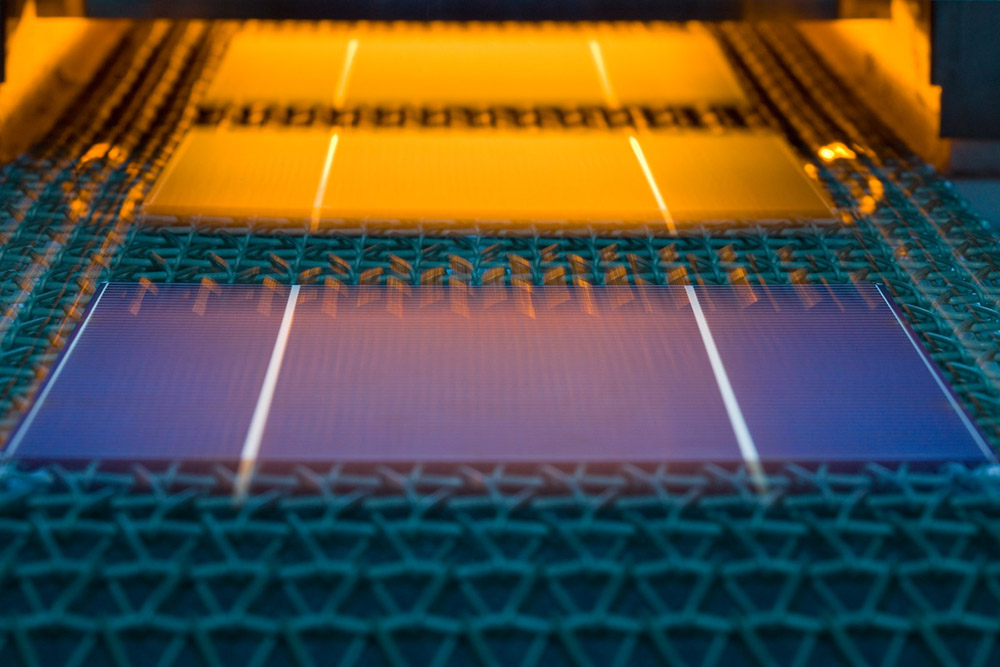The development activities of the Thick-Film Technology group with its focus on functional printing over the course of the years have resulted in a comprehensive portfolio of functional special pastes and inks for applications in composite assemblies and components, as well as sensors in electronics, power electronics, microsystem technology, energy and environmental technology.
The following examples demonstrate current development topics, e.g. from the fields of additive manufacturing and 3D printing. In addition to special pastes and inks for the surface functionalization of 3D components manufactured with additive methods, we also develop pastes for the additive 3D printing of ceramic components. Printed electronics and the development of electrochemical pH sensors for water analysis are other fields we work in.
